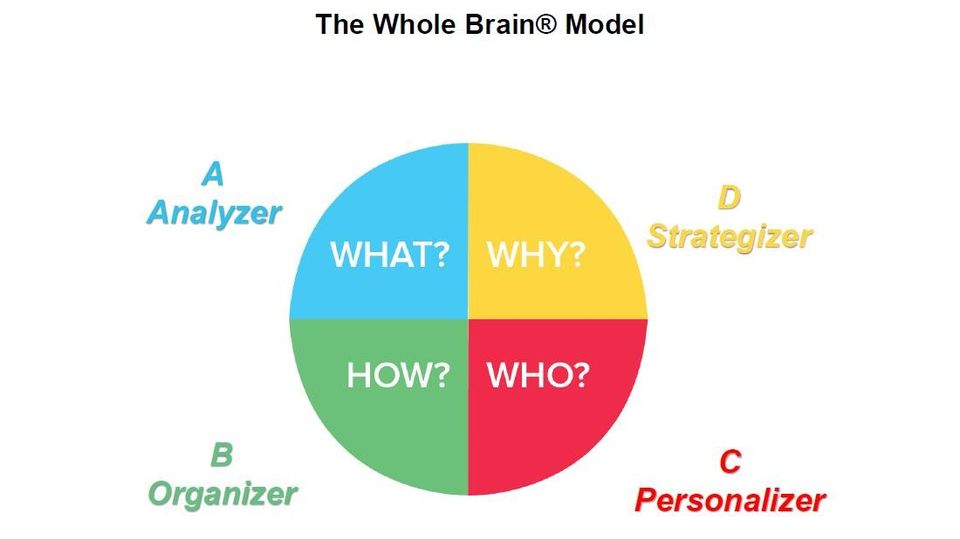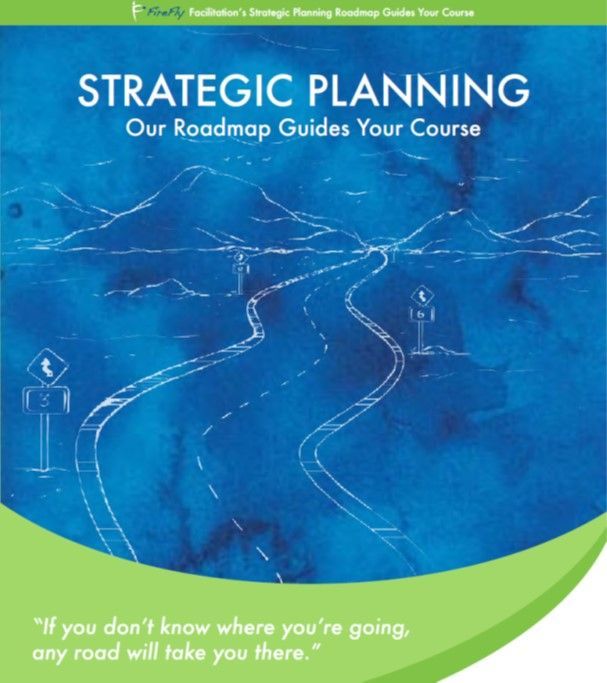Facilitating Conflict Resolution Through Whole Brain® Thinking
How to present information in a way that it can be heard.
Are you ready to learn how to facilitate conflict resolution? When teams are having trouble communicating with each other, it can lead to conflict and reduced productivity. Fortunately, there’s an effective communication technique based on the Whole Brain® Model and HBDI®, that can help people present information in a way that will result in the intended message and impact. Here’s how it works:
- Ask the “why” questions. Why are we here? Why is this important? Give them brief overview of the information you will be presenting. Wherever possible, connect this work to an overarching goal, a long-term strategy, or a broader positive impact on the organization.
- Next, explain the “what.” Give them the relevant facts, the current status, how you will measure success, or trends analysis data.
- Tell the team “who.” Now that you have engaged their heads, move to connect with their hearts. Open the floor for questions. If you know what the impact on them personally or other key stakeholders will be, tell them.
- Ask “how.” Only after you have engaged their heads and their hearts can you engage their feet. This is where you make it very clear what you need the listener to do when they leave here.
Now here is the real kicker. Even though you present this information in the order outlined above, you create your message in the reverse order. You begin with getting very clear in your own mind about what you want them to know, think, feel, and do differently after your presentation. Then you back up and ask yourself, “What would they need to know in order to accomplish that? “ If you can’t answer that question based on what you know about the audience, then this is the time to reach out to others who might know them better. Finally, ask yourself, “How does this link into something bigger and more important that they would care about?”
Sometimes people jump into informing the listeners of the facts, then moving straight to action planning - what the presenter wants them to do about the facts - without making a strong case for why the listener should care. Other people don’t offer the big picture-how the project will help the organization to achieve some larger strategy or goal. Some only share the facts of the current status of the project, assuming that everyone could see what needed to be done about it and who needed to do it. And many people neglect to address how their project impacts the listener personally, what support is needed from them, what questions they had. It’s important to notice how your communication reflects your own thinking and communication style versus reflecting what your listeners need to hear.
One good leadership trait is the ability to be multi-dominant, viewing each topic through multiple lenses. Yet, without a leader like this pushing us, most of us — if left to our own devices —would much prefer to run our presentations by someone who is just like us, thinking and communication style-wise! And so, you get what you’d expect...”It’s beautiful. I wouldn’t change a thing!”
Occasionally people ask me the question, “If I know that I am presenting to a bunch of people who think like I do, do I really need to go through all four quadrants? “ My answer is an unqualified Yes , for several reasons. First, you can’t assume, based solely on a job title or department name, that you won’t have a "whole brain" present. Believe me, in over 20 years of debriefing team HBDI profiles, you would be amazed at how much they aren’t like what you think they might be. Second, although you might want to change up the amount of time you spend in each quadrant, the flow still makes sense as it is. Finally, it stretches your thinking to see the situation from all angles, and just might help you to truly have the greater influence you seek.
So, there you have it. How to make the sparks that fly when two departments with different goals, who might be competing for scarce resources, use that creative abrasion to light a fire that ignites an improved environment not only for these two departments, but also for others to follow in their footsteps. Isn’t that the real calling of leadership?






